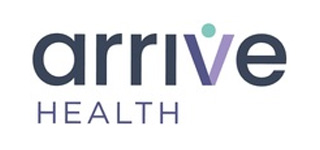Gauss, the leader in AI-enabled surgical applications, announced an over-the-air software update, Triton QBL, that pairs the company’s AI-powered blood loss monitor with integrated protocols and provider alerts that help to synchronize postpartum hemorrhage care. The update will be available to the company’s network of hospital customers this fall.
The United States has the highest maternal mortality rate in the developed world (1). According to the Centers for Disease Control and Prevention (CDC), 60 percent of pregnancy-related deaths are preventable (2). Postpartum hemorrhage is the leading preventable cause of maternal morbidity and mortality (3), and obstetrics organizations such as the American College of Obstetrics and Gynecology (ACOG) and the California Maternal Quality Care Collaborative (CMQCC) recommend use of standardized hemorrhage management protocols (4,5).
On August 21, 2019, The Joint Commission, the body that accredits approximately 77 percent of hospitals in the United States, announced a perinatal safety guideline that requires accredited hospitals to “develop written, evidence-based procedures for stage-based management of pregnant and postpartum patients who experience maternal hemorrhage” incorporating “the use of an evidence-based tool that includes an algorithm for identification and treatment of hemorrhage.” (6) This new standard will go into effect July 1, 2020.
“Management of maternal hemorrhage with stage-based protocols based on cumulative, quantitative blood loss is imperative for safe obstetric care,” said David Lagrew, M.D., executive medical director of Women’s Services at Providence St. Joseph’s Health and co-chair of the CMQCC Maternal Quality Care Collaborative’s Hemorrhage Task Force. “We have adopted the Triton platform across multiple facilities at Providence, and the integration of hemorrhage protocols and provider alerts will help us to deliver the best quality of maternal care, consistent with the Joint Commission’s new perinatal safety standard.”
Triton is the only FDA-cleared and CE Marked system for blood loss monitoring in surgery and obstetrics. It leverages computer vision and the CoreML capability of the iPad and iPhone to monitor blood loss from images captured by the TrueDepth sensor. Triton adoption has grown by more than 100 percent year-over-year, and Gauss’s U.S. customers perform approximately 250,000 deliveries per year (7). Researchers at Mount Sinai Hospital in New York recently published an independent 7,600 patient study in the International Journal of Obstetric Anesthesia on the use of Triton to power a stage-based hemorrhage protocol. The use of Triton was associated with a 340 percent increase in hemorrhage recognition, a 34 percent reduction in delayed interventions to control bleeding in vaginal deliveries, reduced transfusion dose in Caesarean sections, and cost savings leading to a 152 percent return on investment (8).
Triton QBL is compatible with both iPhone and iPad platforms and enables hospitals to embed their own hemorrhage protocols and set customized alerts based on quantified blood loss (QBL) thresholds, delivering real-time guidance to clinicians and facilitating communication and rapid response during an emerging hemorrhage. U.S. hospitals are rapidly adopting smartphones to improve communication and collaboration among clinical teams (9), and Triton’s new iPhone compatibility delivers a mobile platform that enables health systems to leverage their IT investment in enterprise-issued phones.
“We are incredibly excited about this significant evolution of the Triton system to power hemorrhage protocols and support better maternal care,” said Siddarth Satish, founder and chief executive officer of Gauss. “With hundreds of thousands of enterprise-issued iPhones in use by clinical staff in hospitals today, these latest developments enable us to extend the benefits of our AI-enabled patient safety platform to many more patients and healthcare providers.”



